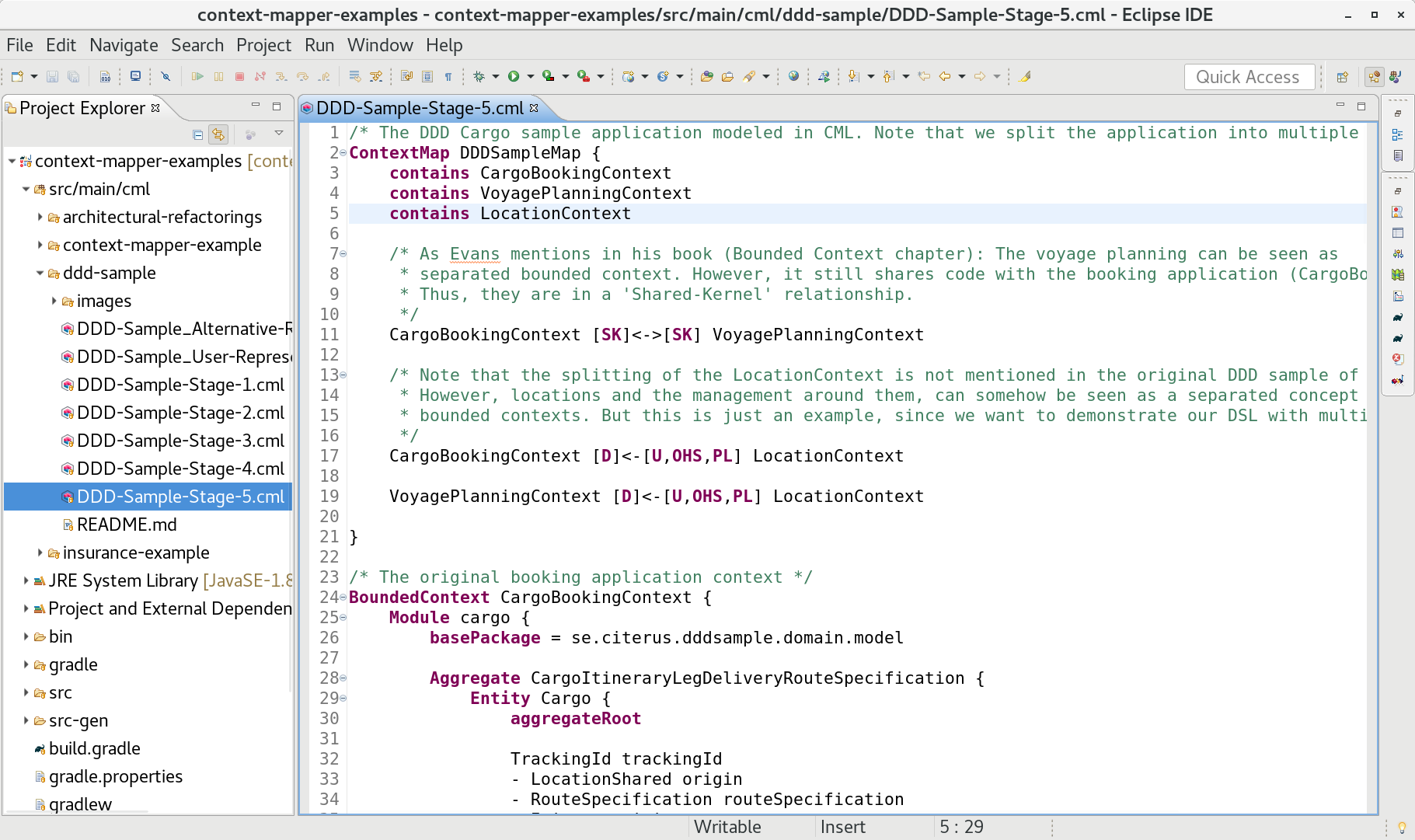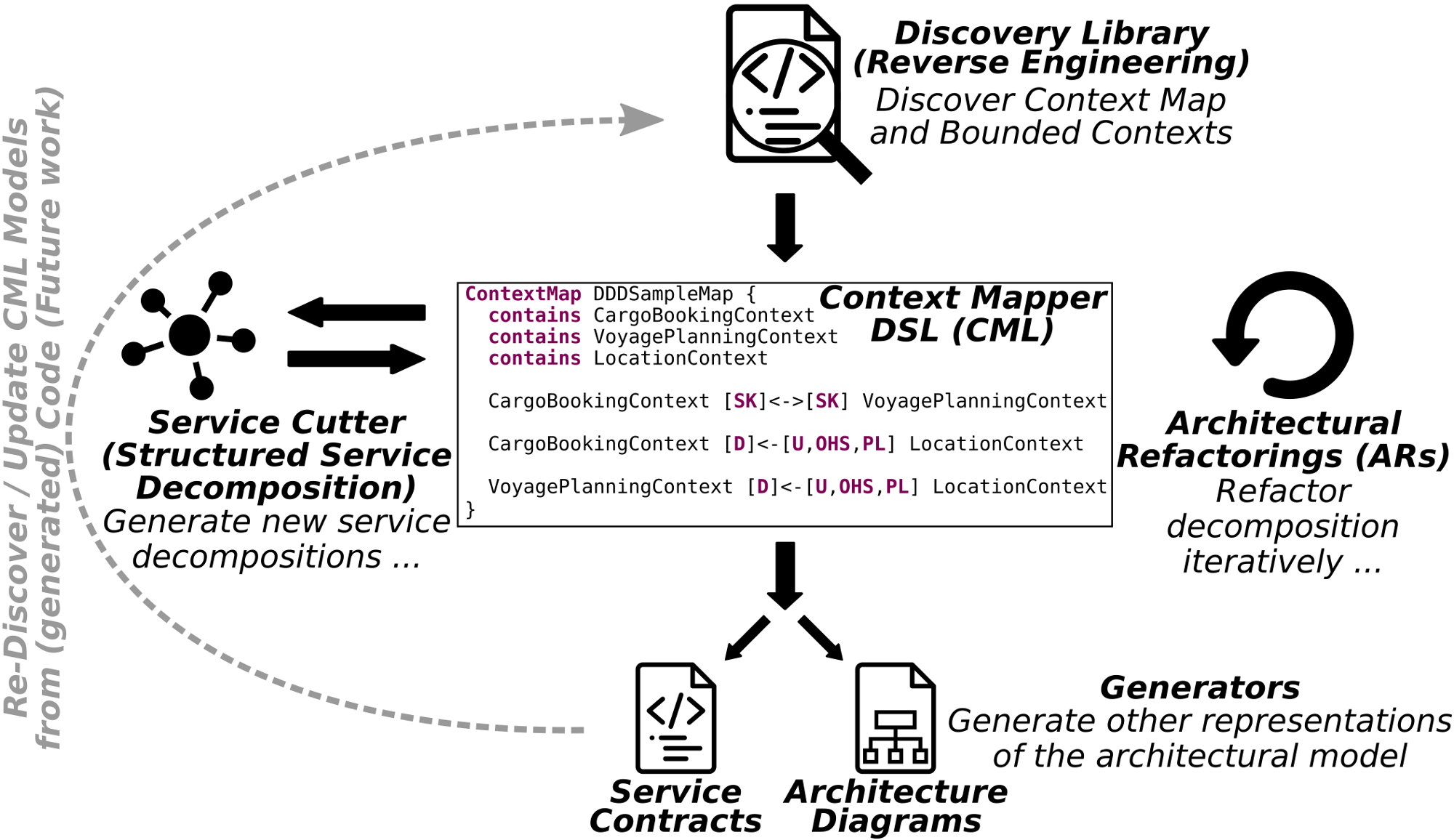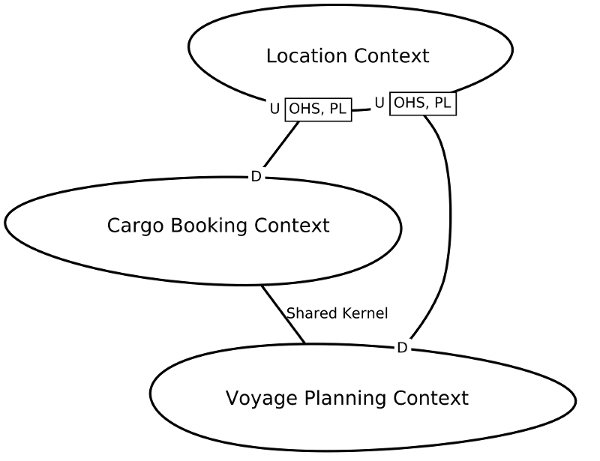I recently finished my master thesis A Modeling Framework for Strategic Domain-driven Design (DDD) and Service Decomposition at HSR which continues the work on the Context Mapper tool and describes the modeling framework architecture that we implement in our open source project.
The whole thesis is published by HSR and can be found here. Below you find the abstract of the paper.
Problem
The decomposition of a system into modules or services is a challenging practical problem and research question that has not been answered satisfactorily yet. With the current trend towards microservices, Strategic Domain-driven Design (DDD) has become a popular technique to decompose a domain into so-called Bounded Contexts. In my previous work I presented Context Mapper, an open source tool offering a Domain-specific Language (DSL) based on the DDD patterns.

It supports the evolution of DDD pattern-based architecture models in a formal and expressive way. By applying Architectural Refactorings (ARs), systems can be decomposed in an iterative manner. However, our validation activities have shown that our tool-based approach requires additional capabilities to expand the target user group. For instance, support for reverse engineering has been requested since re-modeling existing systems is often too expensive in brownfield projects. Decomposition on the basis of a systematic approach and generating graphical Context Maps are other user requirements.
Result
With this thesis I propose a modular and extensible component architecture for a modeling framework based on Strategic DDD. The already existing Context Mapper tool evolved into a framework offering components for reverse engineering, architecture modeling, refactoring, systematic decomposition, and generation of other representations from the Context Mapper DSL (CML) models.

The DSL constitutes the core component of the framework. With the discovery library I propose a strategy-based approach to reverse engineer CML models. An extended set of ARs has been conceptualized allowing users to evolve the architecture models iteratively. With Service Cutter, I integrated a systematic service decomposition approach to derive new Context Maps that improve coupling and cohesion. A graphical Context Map generator enhances the transformation tools to convert CML code into visual diagrams.

Conclusion
The proposed framework supports architects and business analysts in creating DDD-based models and improve their productivity at the same time. I hypothesize that the mentioned personas can benefit from a tool which assists them in evolving Context Maps. During this thesis I applied action research to validate the concepts and improve the prototype iteratively. With case studies such as the Lakeside Mutual microservice project and our own framework architecture I validated the usefulness and effectiveness of the suggested modeling framework. The conducted validation activities indicate that the hypothesis above holds true.
Further Information & Links
- My master thesis report: https://eprints.hsr.ch/821/
- Context Mapper project: https://contextmapper.org/
- Our research papers: https://contextmapper.org/background-and-publications/